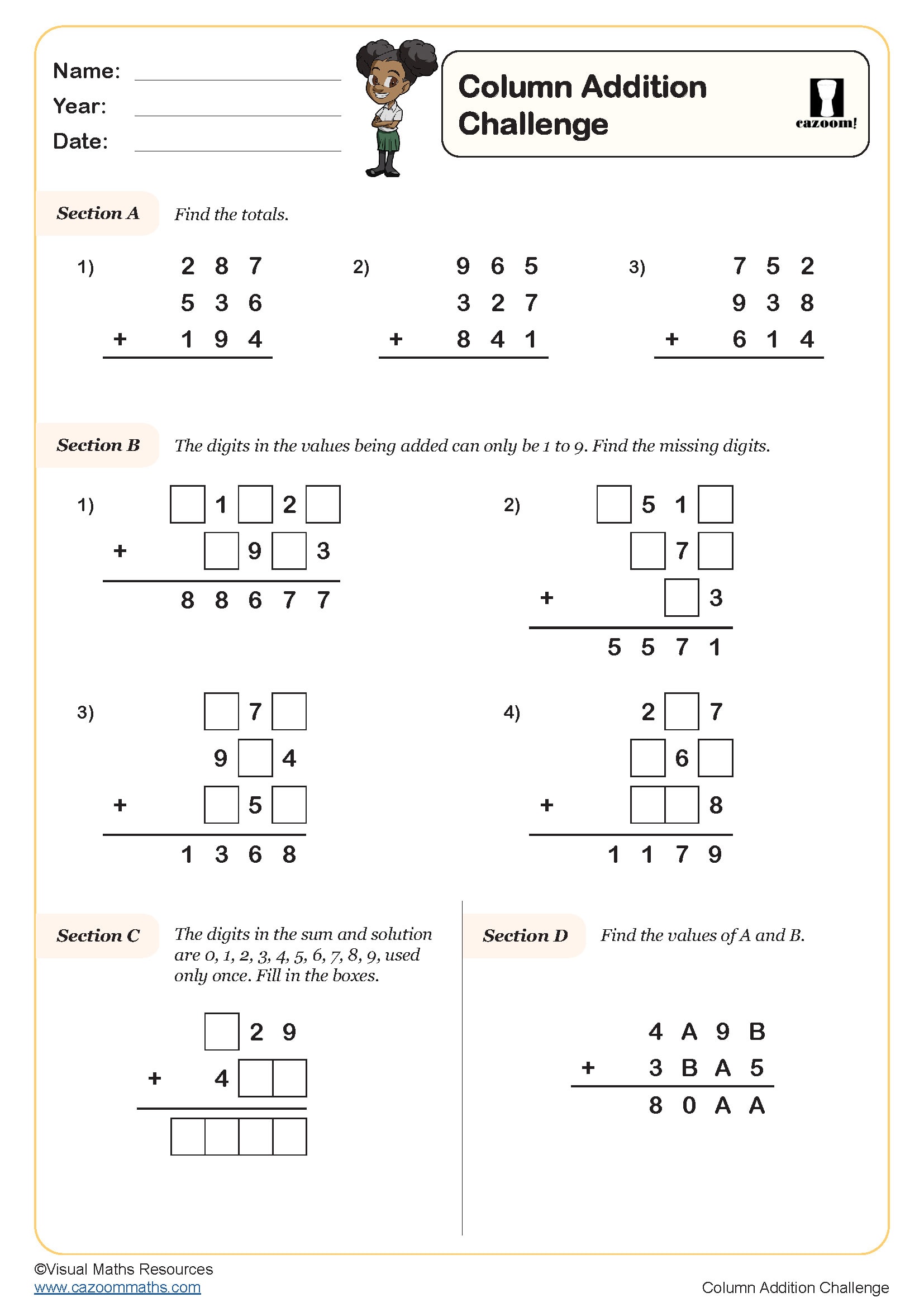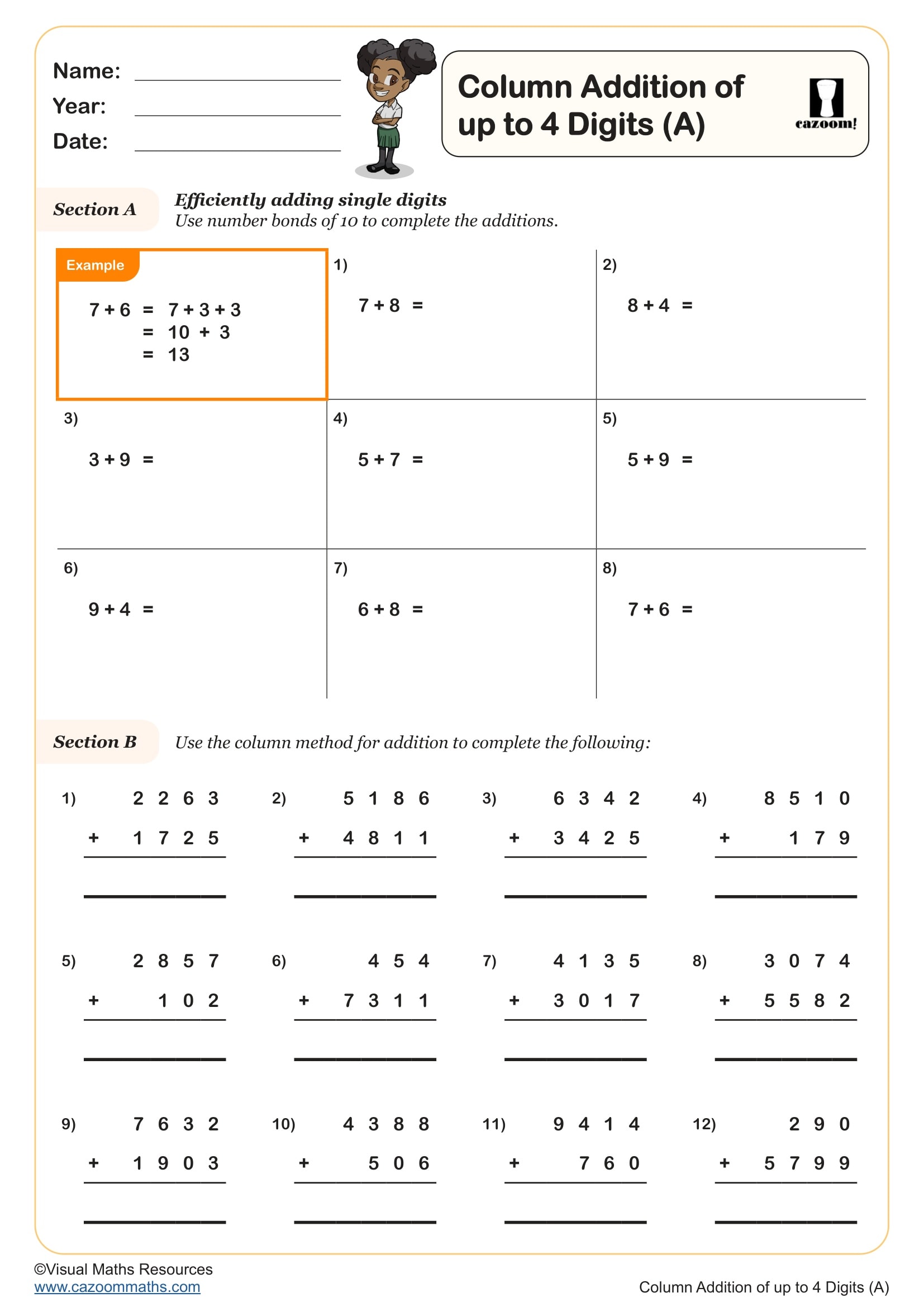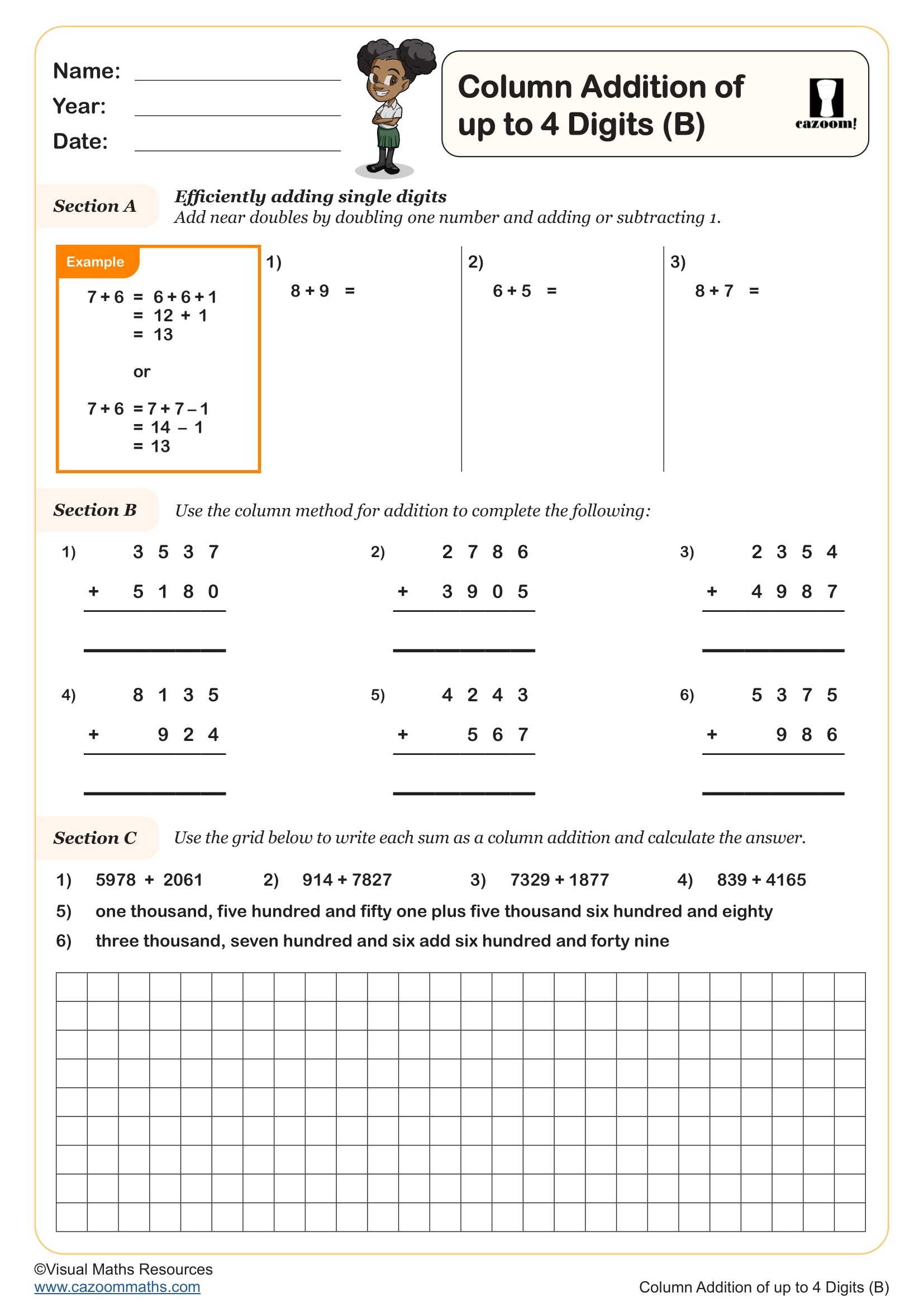Year 4 Written Methods for Addition
Year 4 Formal Written Methods: Column Addition Mastery Worksheets
Each of our maths worksheets is created in ready-to-use, printable PDF format and targets specific skills, such as column addition and the expanded written method of addition, as well as related concepts. The detailed solutions, which are included separately with each of our resources, clearly show every step. These resources make marking quick for maths facilitators and help your primary school students understand their mistakes easily and effectively.
Complete Guide: What's Included in Our Written Methods Addition Resources
We've packed quite a lot into these worksheets! Students start with basic 2-digit column addition before progressing to 3-digit and 4-digit calculations. The popular challenge sections include adding multiple numbers and problems involving carrying across several columns. Specific examples include:
• Adding 2-digit numbers like 47 + 38
• 3-digit column addition, such as 246 + 357
• 4-digit formal methods like 2,456 + 1,789
• Multi-step addition problems with three addends
Step-by-Step Benefits: Why Written Addition Methods Matter for Year 4
We've noticed that pupils who master column addition early perform much better in later maths topics. Regular practice with written methods builds mathematical confidence and improves calculation accuracy. These worksheets are brilliant for homework, intervention sessions, or exam preparation. Here's what consistent practice delivers:
• Stronger place value understanding
• Improved accuracy with regrouping and carrying
• Faster mental calculation skills
• Better problem-solving confidence
• Enhanced number sense for larger calculations
Beyond the Classroom: Real-World Uses for Formal Addition Methods
Column addition appears constantly in secondary maths, from algebra to statistics. Cross-curricular connections include science calculations, geography data analysis, and technology projects. It's actually quite satisfying when pupils realise how often they use these skills:
• Calculating shopping totals and budgeting money
• Working out distances on maps and routes
• Adding scores in sports and games
• Computing ingredients for cooking and recipes
• Analysing data in science experiments
• Managing pocket money and savings accounts



